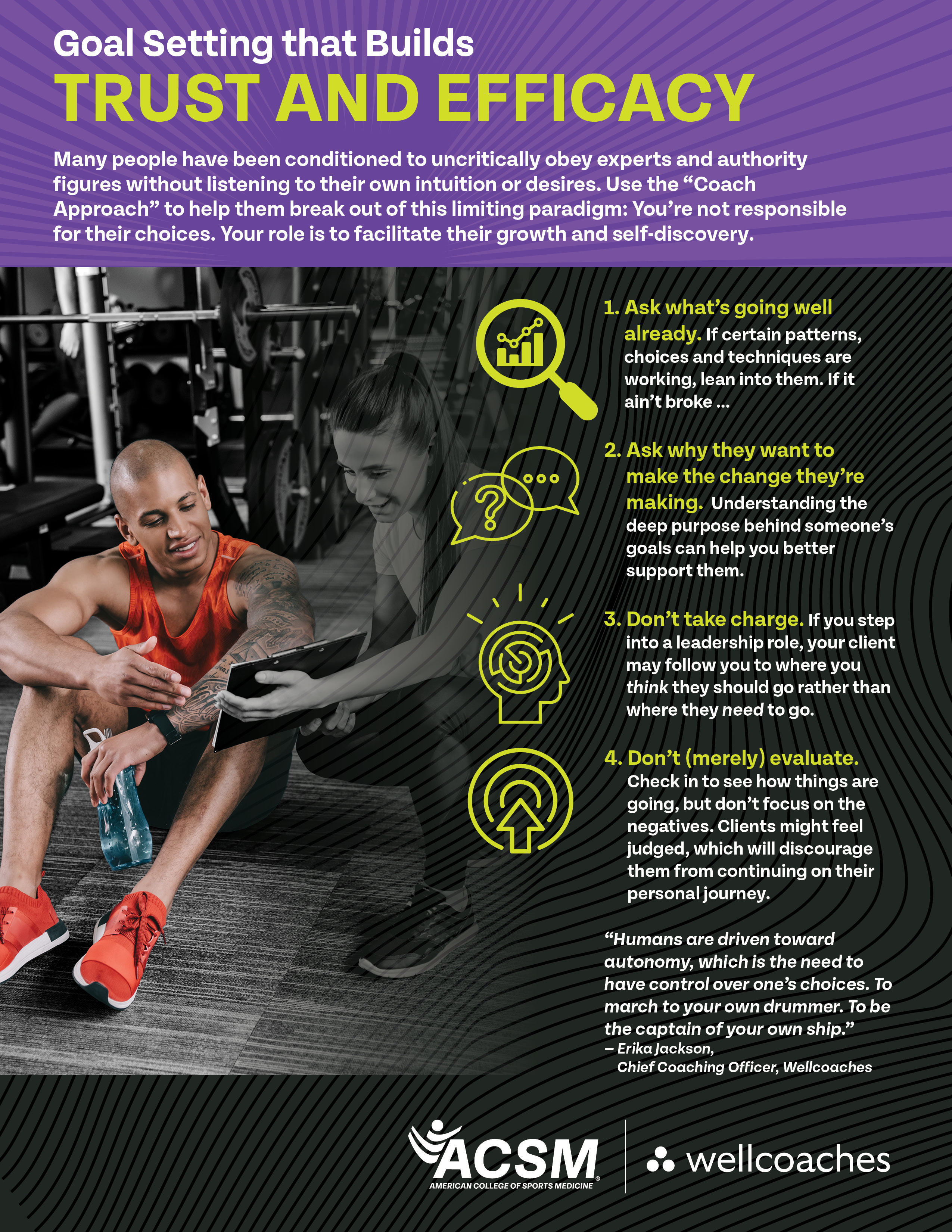Wellcoaches |
Aug.
21, 2024
Humans are driven toward autonomy - the need to have control over one’s choices; to march to one’s own drummer and be the captain of one’s own ship. This leads to the kind of motivation that supports sustainable engagement in healthy behaviors.
Using the coach approach, you are not responsible for your client’s choices but helping your client become more independent, aware and ready for change. With autonomy comes a new energy that builds both the competence and confidence needed to try new things.
Your role is to facilitate the client’s self-discovery and collaborate with your client to discover the best next steps for them. Initially, they may resist taking the lead – they’ve been conditioned by our systems to be told what to do. We can instead create the opportunity for them to learn a lot about themselves, rather than just taking prescription from you. When they know you trust in their autonomy, they will trust you more.
Here are three strategies for supporting clients in setting goals that builds trust in you – and in themselves.
Ask what is going well already.
This may seem counter intuitive. Afterall, aren’t we there to fix and problem solve? Yes, and while you certainly may have expertise to offer in the areas the client wants to learn about, they also have something to teach you. There is a lot to be learned about what they are doing well already. Sharing about these things first builds confidence and invites them to share why things are going well. Ask about what internal resources (like personality traits or strengths) they’ve leveraged to be successful. And, what external resources have supported them; things like the people and tools that are helpful.
Don’t take charge.
Make sure that the goals that your client sets are the goals your client sets. In other words, not dictated or prescribed by you (unless they truly do not know what to do). Self-efficacy is built upon the foundation of motivation and the strongest motivation comes from within our clients, not from external forces. Ask what goals they would find most compelling and exciting. And, discover what is behind their goal – in other words, the “why.” Is the goal “to increase resistance training?” Ok, but why? Well, “to feel stronger.” Great, and why? “Because my daughter has two toddlers that I want to feel confident about picking up.” BINGO! This infusion of motivation will not only lead to more confidence about the goals to set but also clarity about what goals to set.

Goodbye evaluation, hello curiosity!
A key to building trust in the goal setting process is the client feeling trust about what happens after they’ve tried to enact the goal. You can imagine the consequence if they believe that the follow up conversation will include any indication of disappointment, disapproval or evaluation. We can communicate these relationship barriers overtly (in what we say) and subtly (with facial expressions and energy). So, how do we avoid this? First, by remembering the client’s choices are theirs, not yours, and not a reflection of your worth as a health professional. This will relieve you of the burden that can lead to your own negative reactions. Next, get curious. Regardless of the client’s outcome, there is something support them in discovering. What went well, if not all of it? Why did those things go well? How did they overcome challenges? What did they learn about what works, and doesn’t, for them?
Your approach and process to the goal setting process will have a measurable impact on your relationship with the client and on their relationship with their goals. I hope you’ll will make it a goal to experiment with these three simple steps today.
Download the Infographic
Find more resources from Wellcoaches here